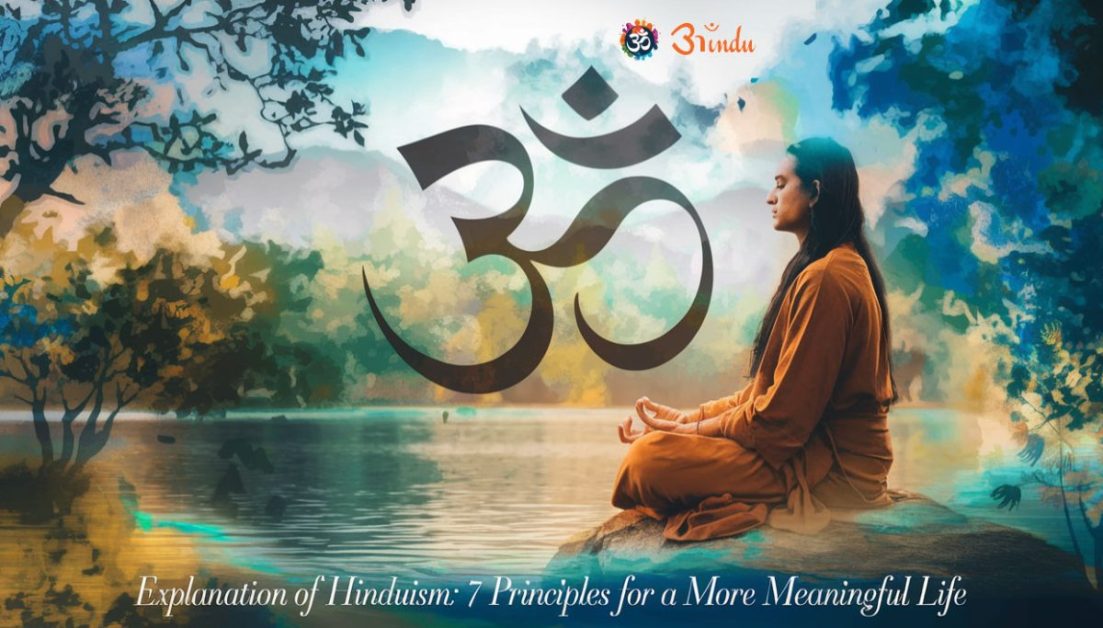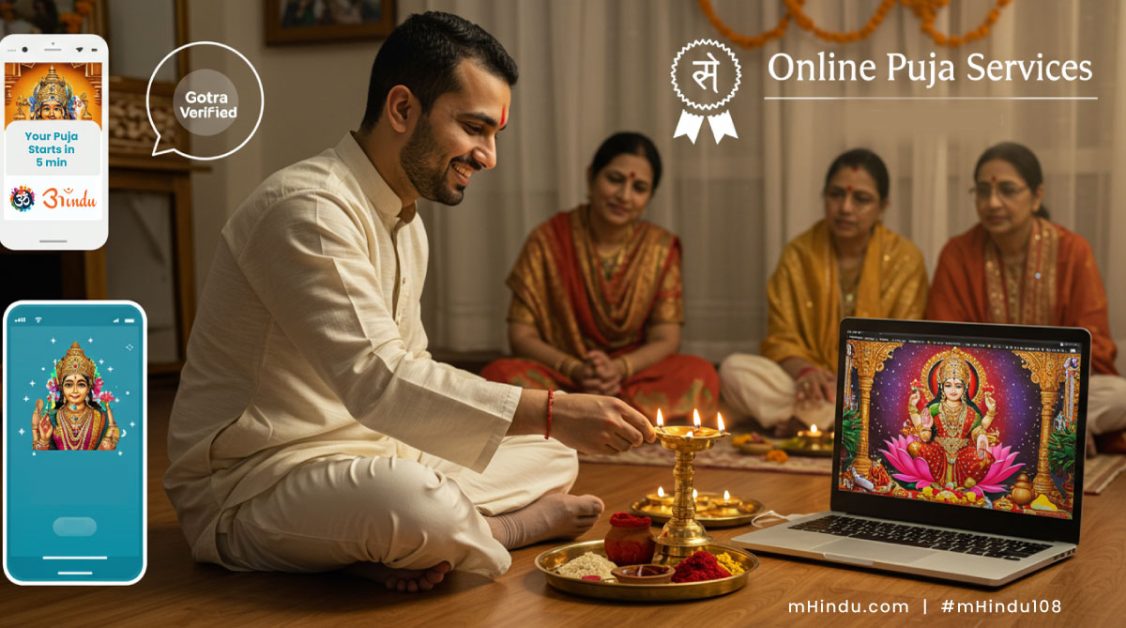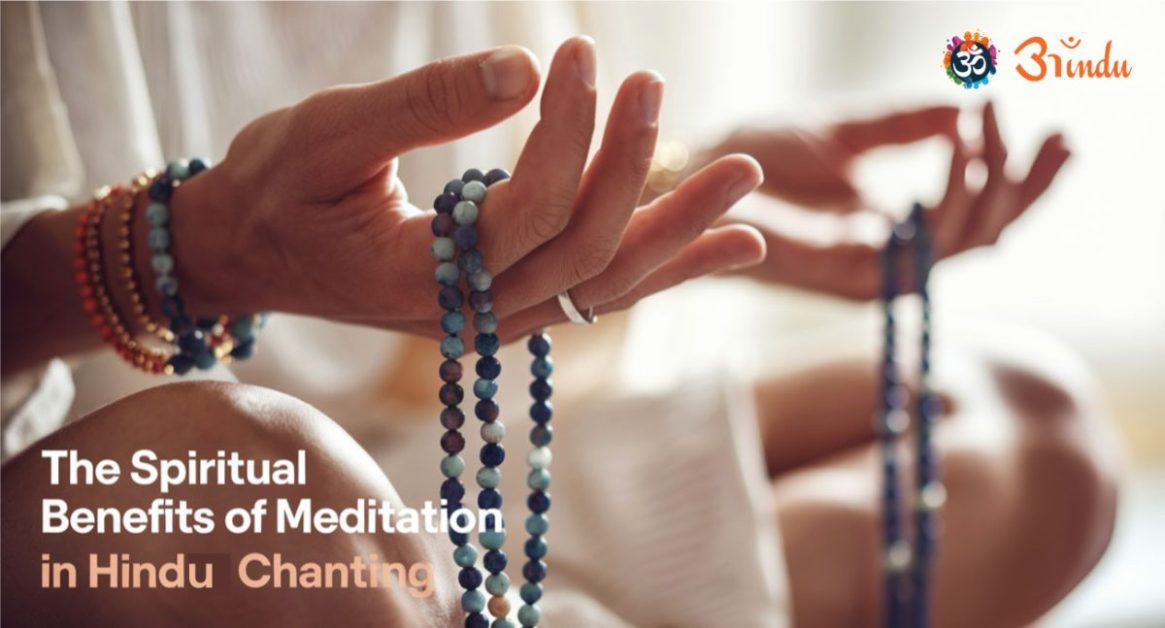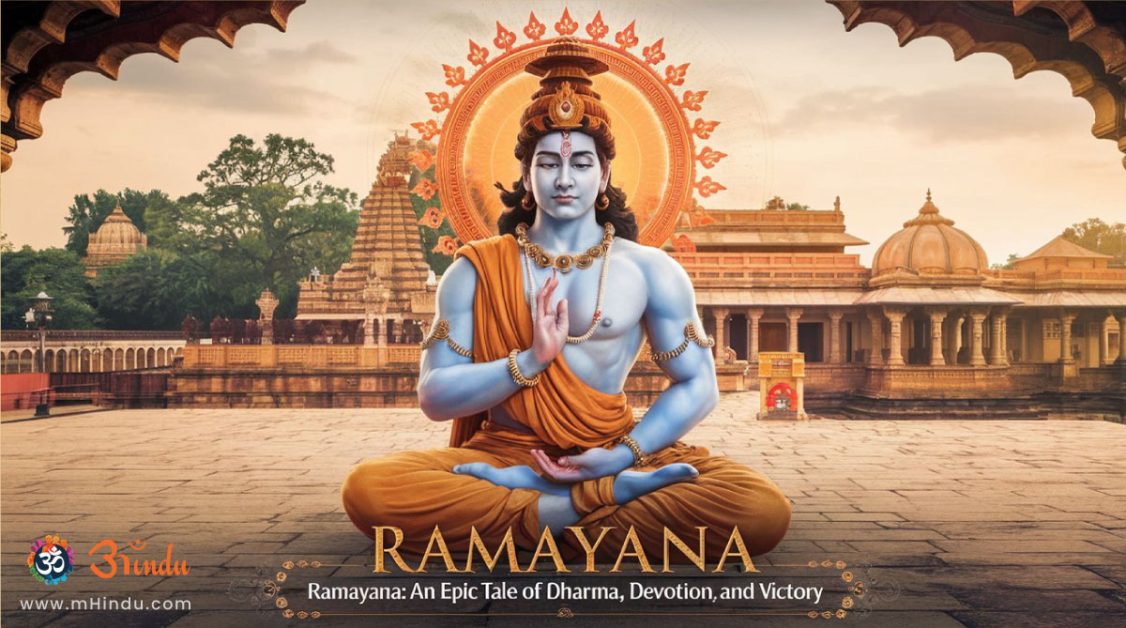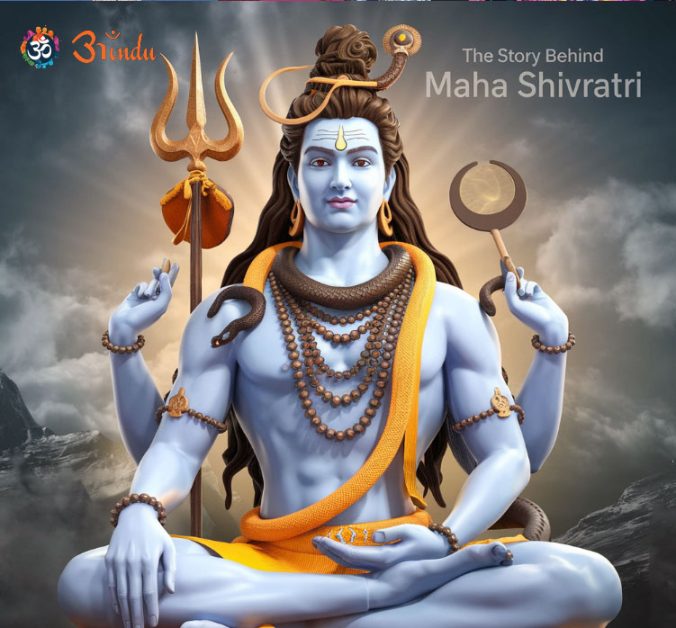
Introduction: The Redefined Threshold of Devotion
It was a serene morning in Kolhapur when Meenakshi, a schoolteacher from Pune, arrived with her family at the grand gates of the Mahalaxmi Temple Kolhapur—one of the Shakti Peethas deeply revered across Bharat. Draped in her casual weekend attire, she was stopped at the entrance. Confused and embarrassed, she was handed a dhoti-saree set and gently asked to change.
Explore Blog Content
ToggleWhat followed was a lesson in tradition. The temple had, like many others in Maharashtra, begun strict enforcement of the dress code in Kolhapur temples.
While the decision has sparked debate across digital and spiritual corridors, it represents something far deeper than clothing—it is a revival of Sanatan Dharma traditions in sacred spaces, reminding devotees that entering a temple is not a right—it is a privilege.
“A temple is not a tourist spot. It is a sanctum of cosmic vibration,” said a priest at the Jyotiba temple, where the policy is also in force.
As India wrestles with the tides of modernity, tradition gently asserts itself in temple corridors through codes, customs, and choices. This blog explores the story behind the dress code, its purpose, the responses, and how it fits into the larger framework of Hindu temple dress code philosophy rooted in Sanatan thought.
Understanding the Cultural Foundations of the Dress Code in Kolhapur Temples
The Paschim Maharashtra Devasthan Samiti (PMDS), the governing body of temples like Mahalaxmi and Jyotiba, reinstated the dress code policy not to impose, but to protect sanctity. The guidelines bar ripped jeans, sleeveless tops, transparent clothing, shorts, and any attire that doesn’t align with traditional modesty.
This isn’t a modern invention. Hindu temples for centuries have operated with an unwritten code of purity, visible in practices such as removing shoes, taking a bath before darshan, or covering the head with a cloth. The emphasis has always been on entering the deity’s abode with humility and purity of body and mind.
Why was the dress code reintroduced at Mahalaxmi and Jyotiba temples?
While the rule was introduced in 2021, it was only after repeated complaints and public concerns that enforcement became strict in 2025. Devotees, priests, and cultural custodians were increasingly disturbed by attire perceived as disrespectful to the temple environment. PMDS Secretary Shivraj Naikawade stated it simply:
“People are entering temples as if they are entering malls. That must change.”
Is there a historical basis for the Hindu temple dress code?
Yes. Ancient scriptures like the Manusmriti and Agama Shastras mention “shuddha vastra” (clean, sattvic attire) as a prerequisite for puja. Even in epics, darshan is always preceded by ablutions and traditional garments. In Kerala’s temples, men enter bare-chested with a veshti; in Tamil Nadu, women wear sarees or salwar. This is not orthodoxy—it’s cultural rhythm.
🕉️ Shloka Integration:
“Yatra naryastu pujyante, ramante tatra devataḥ.” (Manusmriti 3.56)
“Where women are worshipped and respected, there the divine resides.”
By extension, dress code policies also aim to honor femininity and sanctity, not suppress them.
How Sanatan Dharma Traditions Shape Temple Etiquette Today
The debate around clothing often forgets a key truth: temples are not public squares—they are sacred ecosystems. Within the Sanatan Dharma worldview, clothing is not merely fabric—it’s a frequency. Our outerwear affects inner alignment. That’s why, in temples, devotees wear cotton, white, or ochre—clothes that absorb energy rather than distract it.
“When we enter the garbhagriha, we’re entering the cosmic womb. Would you wear sneakers and shorts in a womb?”—commented a seer from Nashik.
The current move by Kolhapur’s temple authorities is in line with global religious customs. From St. Peter’s Basilica in Rome to mosques in Mecca, dress codes exist universally in places of worship. What makes the dress code in Kolhapur temples unique is its deeply symbolic fusion of ritual, identity, and feminine power, especially at the Mahalaxmi Temple Kolhapur, where Devi is worshipped in her fullest Shakti form.
What exactly is allowed and disallowed under Kolhapur temple dress codes?
Allowed: Sarees, salwar suits, dhotis, kurtas, non-transparent full-length clothing for both men and women.
Disallowed: Shorts, miniskirts, sleeveless tops, transparent or skin-tight clothes, ripped jeans, revealing western outfits.
To aid compliance, shops nearby now offer traditional garments like Sovala (dhoti & uparna for men; sarees for women) for rent or purchase.
Does this dress code discriminate against tourists or urban visitors?
The intention is not exclusion, but inclusion through understanding. Authorities ensure that no one is turned away harshly—alternative clothing is offered. Awareness boards are being set up in multiple languages. The effort is to bring urban visitors into the fold of timeless etiquette, not shame them.
🕉️ Shloka Integration:
“Anuddhatam chittam yatra, shantim tatra labhate.” (Bhagavad Gita 6.15)
“Where the mind is humble and tranquil, peace resides.”
By dressing appropriately, one aligns externally for internal peace.
Devotion or Discomfort? Voices from Devotees and Temple Workers
The implementation of the dress code in Kolhapur temples has ignited conversations beyond the temple gates. For many, it’s a matter of spiritual discipline; for others, a question of freedom and convenience.
Sunita Patil, a Kolhapur native and a regular visitor to the Mahalaxmi Temple Kolhapur, believes the enforcement has brought back long-lost sanctity.
“Earlier, people walked in wearing sleeveless tops and leggings, even chewing gum. Now, there’s a quiet dignity.”
However, not everyone shares her sentiment. Trupti Desai, an activist known for temple access campaigns, warned that such restrictions—if not communicated respectfully—can alienate visitors.
“Temples must welcome, not judge. Make rules, but also make people feel included.”
And therein lies the crux. The Hindu temple dress code is not just a rule—it’s a sentiment. But sentiments, when miscommunicated, can become flashpoints.
Temple priests, meanwhile, report greater focus and reverence during rituals since the enforcement began.
“Darshan has slowed down, but sincerity has increased,” noted a senior pujari at Jyotiba Mandir.
How are devotees reacting to the Kolhapur temple dress enforcement?
Reactions are divided. Elder devotees, cultural workers, and spiritual groups have largely welcomed the move, saying it reintroduces discipline in temple visits. However, younger and urban audiences feel surprised or unprepared when turned away. This has prompted authorities to improve awareness signage, online announcements, and garment rentals.
Are there provisions for unaware visitors or tourists?
Yes. Shops near the temples now offer Sovala sets and sarees for rent at nominal rates. Volunteers are trained to guide visitors without shaming or public embarrassment. In many temples, devotees unaware of the dress code are escorted politely and educated, maintaining the dignity of the experience.
🕉️ Shloka Integration:
“Atithi Devo Bhava” — the guest is God.
This ancient maxim drives the temple’s intention: not to exclude, but to elevate every guest’s spiritual experience.
The Legal, Ethical, and Scriptural Dimensions of Temple Dress Codes
Whenever a tradition confronts modernity, courts are not far behind. Legal voices have started examining if enforcing the dress code in Kolhapur temples violates Article 25 (Right to Religion) or Article 14 (Right to Equality).
However, constitutional experts clarify that religious institutions have the right to regulate conduct within their premises—as long as enforcement isn’t discriminatory or violent.
Moreover, temples are not public property. They are community-managed spaces with their own traditions and governance. Much like a gurdwara requires a headcover or a mosque restricts entry without ablution, Hindu temples too have self-determined decorum codes.
But enforcement must reflect Sanatan Dharma traditions—gentle, inclusive, wise.
“Shasan se nahi, sanskar se badlav hota hai,” said a Kolhapuri elder. (Change happens through culture, not compulsion).
Is it legal to enforce a dress code in temples?
Yes. Courts have repeatedly upheld that temples have the right to regulate internal matters related to decorum, rituals, and entry—provided it doesn’t violate constitutional rights. The dress code, when applied equally to all, does not amount to discrimination.
Are there any court rulings on dress codes in Indian religious spaces?
In cases involving churches, mosques, and Hindu temples, courts have ruled in favor of context-sensitive dress norms. For instance, the Supreme Court upheld Sabarimala temple’s practices in certain contexts, balancing religious autonomy with gender rights.
🕉️ Shloka Integration:
“Dharmo rakṣati rakṣitaḥ” – Dharma protects those who protect it.
By enforcing dress codes respectfully, temples protect their spiritual environment from dilution.
Times of India article on PMDS dress code
The Global Context—What Other Faiths Teach Us About Sacred Spaces
While discussions about clothing often become hyperlocal and politicized, the reality is that every global religion enforces dress guidelines within sacred spaces.
- Christian churches—especially in the Vatican—deny entry in shorts or bare shoulders.
- Islamic mosques mandate covered heads and modest clothing.
- Sikh gurdwaras require covered heads and removal of shoes.
Yet none of these is labeled regressive. They are seen as expressions of devotion and humility.
In contrast, when Hindu temples introduce such codes, they are sometimes misinterpreted as moral policing. The difference lies in narrative.
Sanatan Dharma traditions, when communicated rightly, show that ritual clothing is not about suppression—it’s about sanctification. A devotee doesn’t lose identity by wearing a dhoti or saree—they gain access to sacred frequency.
“Your body is the temple of the soul. And when it enters the temple of God, it must mirror reverence.”
Do other world religions enforce temple or church dress codes?
Yes. Almost all. Churches, mosques, synagogues, and even Buddhist monasteries prescribe respectful clothing. The reasons are the same: to preserve sanctity, encourage stillness, and elevate inner awareness.
Why is Hinduism often criticized when enforcing cultural norms?
Due to colonial narratives, political misuse, and lack of clear storytelling, Hindu traditions are often seen through a lens of rigidity. But Sanatan Dharma is fluid, diverse, and deeply compassionate—when rooted in truth and clarity, its norms become liberating, not limiting.
🕉️ Shloka Integration:
“Sarva dharmān parityajya mām ekaṁ śaraṇaṁ vraja.” (Bhagavad Gita 18.66)
“Abandon all duties, surrender unto Me alone.”
This surrender includes the willingness to adopt spiritual discipline—including dress.
Summary: A Dharmic Dialogue Between Cloth, Culture, and Consciousness
The decision to implement a dress code in Kolhapur temples—particularly at revered shrines like Mahalaxmi Temple Kolhapur—is not just about wardrobe. It’s a mirror reflecting how Sanatan Dharma traditions continue to offer guidance, even in contemporary society.
From the scriptures to modern sanctums, clothing has always played a symbolic role in preparing the devotee for communion with the Divine. What you wear, how you present yourself, and your physical demeanor within a temple—these are not mechanical rules. They’re part of bhava—spiritual mood.
The dress code isn’t an attack on modernity—it is a plea for intentionality. To remind us that stepping into a mandir is not routine—it is sacred. And sacredness demands self-awareness.
By enforcing traditional attire guidelines and doing so with respect, education, and empathy, temple administrators have sparked a national conversation. A conversation that spans legality, identity, spirituality, and hospitality. It also shows that while the world moves forward, Hinduism evolves without erasing its soul.
“We’re not asking people to change. We’re asking them to remember.” – Temple volunteer in Kolhapur.
As Kolhapur’s temples rediscover their voice, it’s upon us—devotees, citizens, and Dharma carriers—to listen, understand, and elevate the dialogue. Because every tradition, when practiced with love, becomes timeless.
And as we step into these divine spaces—draped not only in dhotis and sarees but in humility and devotion—let us remember:
True progress lies not in what we shed, but in what we choose to preserve.
FAQs – Dress Code in Kolhapur Temples
1. What is the new dress code in Kolhapur temples?
The dress code prohibits shorts, ripped jeans, sleeveless tops, transparent or revealing clothing. Devotees are encouraged to wear sarees, salwars, kurtas, and dhotis to maintain spiritual decorum.
2. Why was the dress code introduced at Mahalaxmi Temple Kolhapur?
It was implemented by PMDS to preserve cultural and spiritual sanctity after rising complaints about inappropriate attire in temple spaces.
3. Is the dress code mandatory for all visitors?
Yes, it applies to all—men, women, and children. Entry is restricted to those adhering to the guidelines, but traditional garments are available nearby for those unprepared.
4. Does the dress code violate any constitutional rights?
No. Courts uphold the right of religious institutions to regulate conduct within premises, including attire, as long as it doesn’t discriminate unjustly.
5. Are other temples in Maharashtra enforcing similar codes?
Yes. Temples in Tuljapur, Pune, and Ratnagiri have issued similar advisories. Many are under discussion or voluntary compliance stages.
6. How are tourists being made aware of the dress code?
Signs in multiple languages are being installed. Local vendors provide affordable traditional clothing for rent or sale near temple gates.
7. Is this dress code part of Sanatan Dharma traditions?
Yes. Scriptures and temple customs have long emphasized modest, sattvic attire as essential for puja and darshan.
8. What if someone refuses to follow the dress code?
They will be respectfully denied entry. Volunteers are instructed to offer alternatives and explain the rule with compassion.


